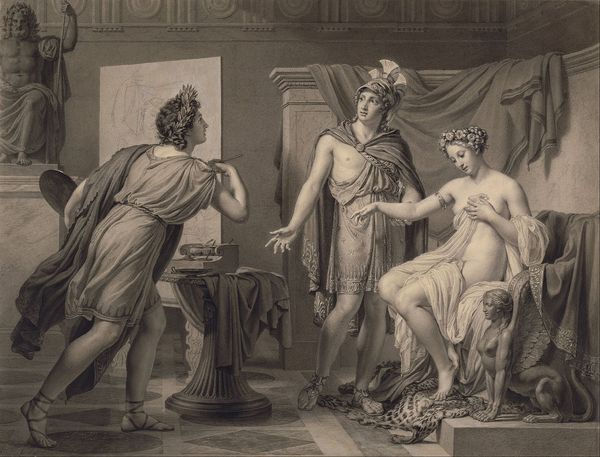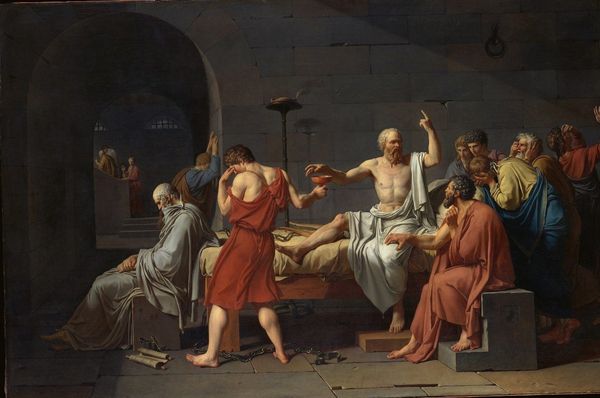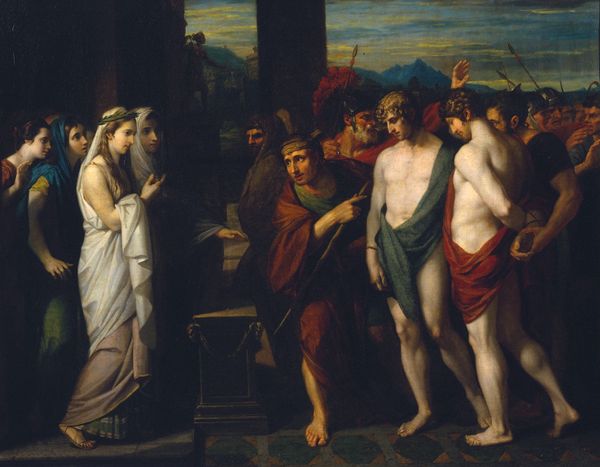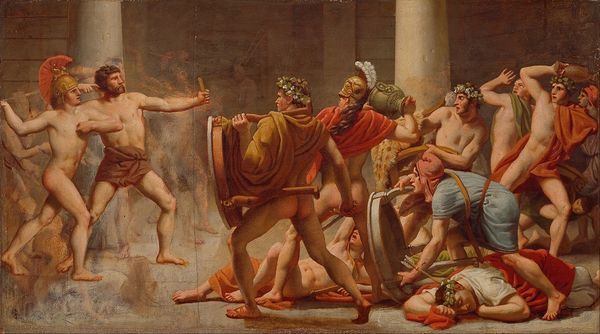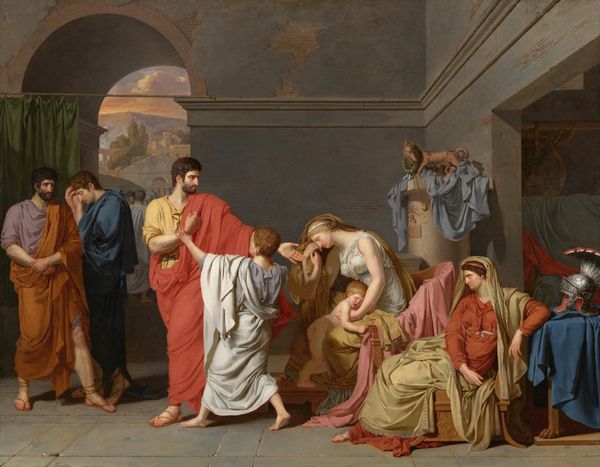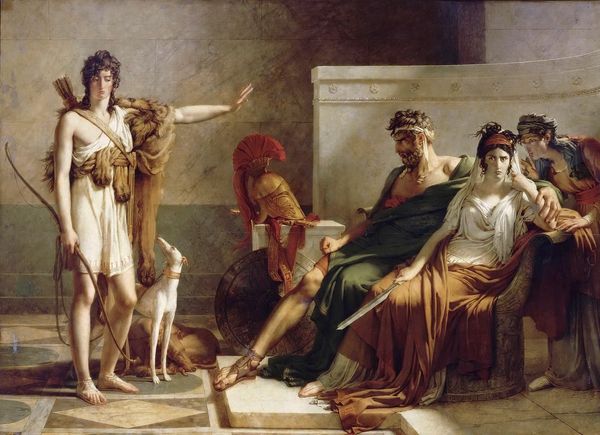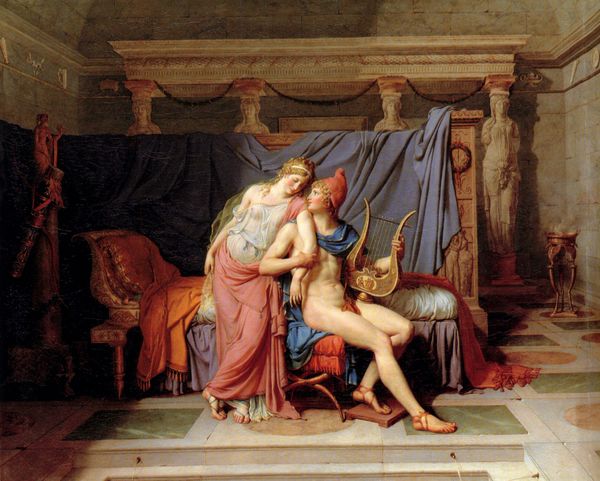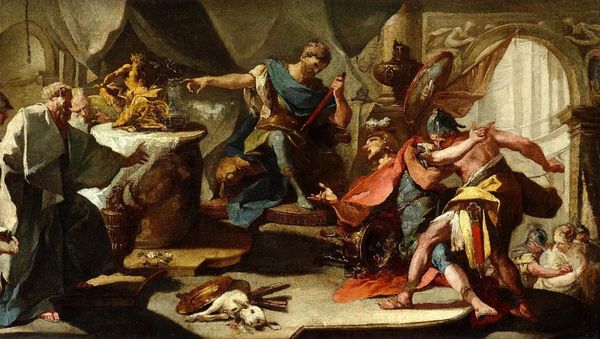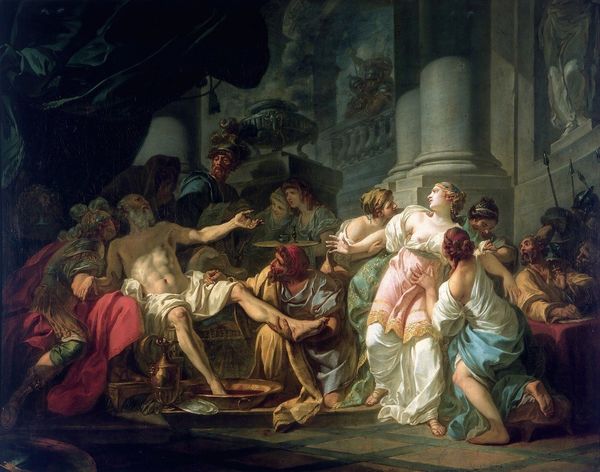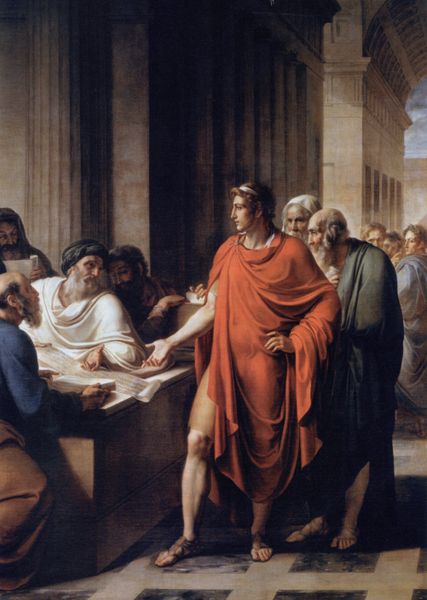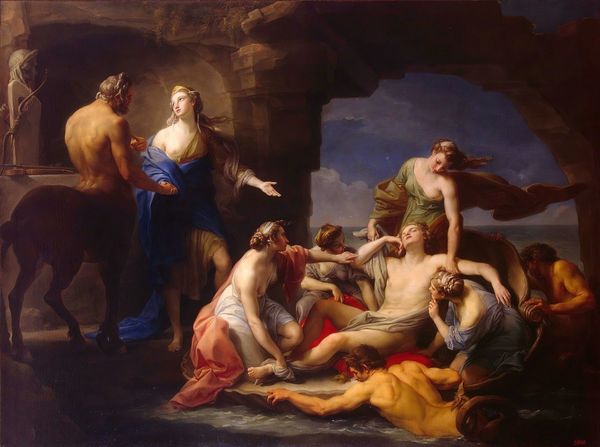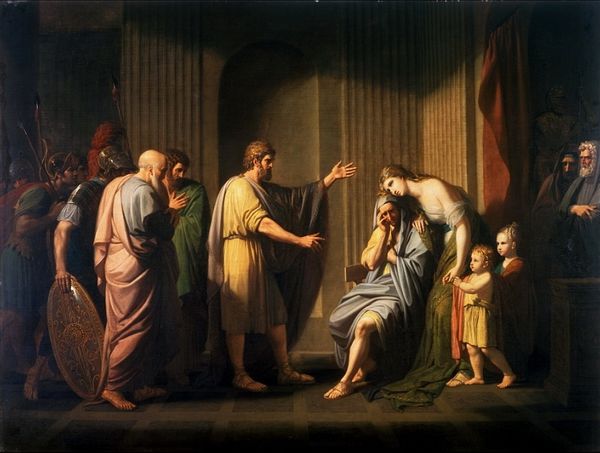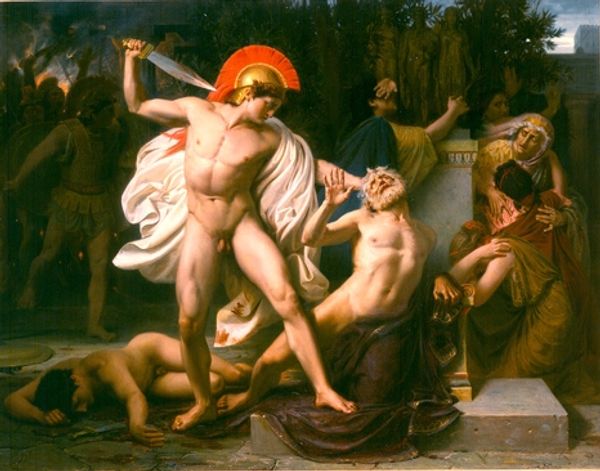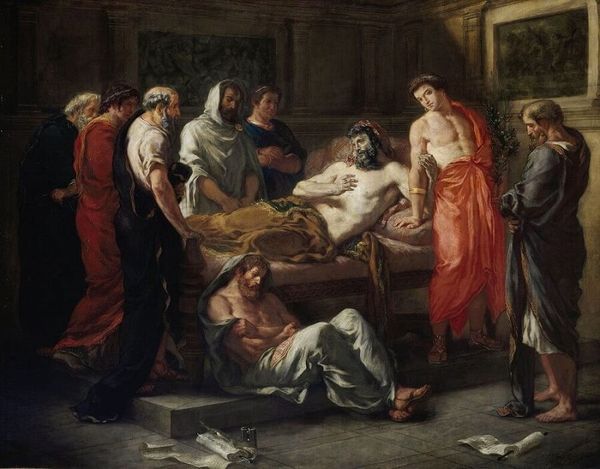
painting, oil-paint
#
portrait
#
allegory
#
painting
#
oil-paint
#
figuration
#
classicism
#
romanticism
#
mythology
#
history-painting
#
nude
Copyright: Public domain
Jérôme-Martin Langlois painted Générosité D'Alexandre in France, during the early 19th century, in the Neoclassical style. In this painting we are shown how Alexander the Great spares the family of Darius after the Battle of Issus, highlighting his magnanimity. The image offers a view into the moral and political values of its time. Neoclassical art served as a visual language for the French Revolution and the Napoleonic era. The idealized figures, classical architecture, and moralizing subject matter were intended to promote civic virtue and national pride, while drawing parallels between Napoleon’s empire and those of the ancient world. The painting invites us to consider how art is used to shape our understanding of power, morality, and history. To understand this painting further we might consider the writings of Plutarch, who chronicled the life of Alexander and other relevant historical accounts. Through such resources, we gain insights into how the image reflects the complex relationship between art, politics, and society.
Comments
No comments
Be the first to comment and join the conversation on the ultimate creative platform.
